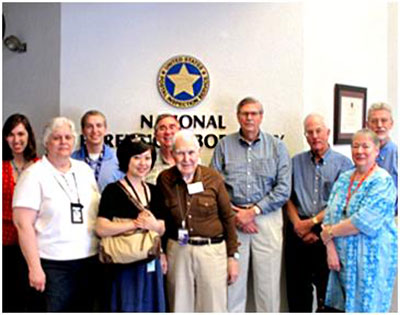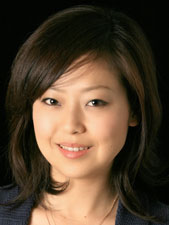Docent Field Trip: The U.S. Postal Inspection Service Crime Lab in Dulles, VA
By Motoko Hioki, School & Tours Coordinator
As we gathered for the long drive to the The U.S. Postal Inspection Service Crime Lab in Dulles, VA. I reflected on the unique experiences docents have when they came together. Because they all volunteer on different days, going on a field trip feels like a class reunion to many docents—although they know the faces and who they are, they need to take time to match the names and faces.

This phenomenon seems like it happens every time we have a docent event like a field trip, training, or appreciation dinner, since docents don’t see each other at all after the initial training. Once docents start giving tours, they become “the Tuesday Docent” or “the Saturday Docent” and don’t run into each other while at the museum. Docents from different “class years” often meet each other for the first time at the different docent gatherings. I think it’s kind of fun, and many docents here enjoy that aspect of participating in different events at the museum and meet “new” people as well. They are just naturally chatty, friendly and curious people; to be a docent, it helps to be a people person!
At the entrance to the Crime Lab, the docents were excited. Going on a field trip is always fun, no matter how old you are. But another thing is that they were excited because this experience will further enrich their knowledge and benefit museum visitors. The museum has an exhibit on Postal Inspectors’ work and many already have basic knowledge on the topic, which will make their tours more engaging for visitors. As experienced (or, well-trained, for the new folks) tour guides, they know very well that it makes such a difference when you are able to say “...and when I was at the Crime Lab of the Postal Inspectors and the Forensic Document Examiner told me...” versus “I read in a book that..,” It’s a really powerful hook when visitors get the perspective from something they eye-witnessed.
The tour led by two women from the Forensic Laboratory Services, was very informative and interactive. As a curious bunch, we had lots of questions, and I mean lots! But the staff at the lab were extremely nice, and answered every single questions without making us feel like we should stop asking questions (rather, it encouraged us to ask even more questions). The part docents enjoyed the most was hearing about the stories behind each crime, seeing in action all these technologies we exhibit at the museum. Hearing about back and forth communication with staff on the time they were working on certain case, what the struggles were and how nervous and responsible they felt were also one of the activity that docents really enjoyed. A couple of them mentioned the value of the personal perspective in the van ride back to the museum.
It was truly a treat for all of us to be able to visit the Postal Inspectors’ Crime Lab, but more rewarding experience was through the conversation docents exchanged each other and wonderful staff at the lab who made this great opportunity available to Postal Museum docents.
In the end, I’d like to thank Dan Mihalko, retired Postal Inspector in charge and a Postal Museum docent, who arranged the tour, and all the staff at the U.S. Postal Inspection Service.
* What the heck is a Postal Inspector??
To learn more about what Postal Inspectors’ duties are and its history, visit this online exhibition, and the Postal Inspection Service website:
https://postalinspectors.uspis.gov/
For more on the types of crimes Postal Inspectors deal with, visit: uspis.gov/about/what-we-do

About the Author
Motoko Hioki: "I have a long term relationship with museums. Like many museum goers became so, my love towards museums grew as my parents took my brother and I on (almost) weekly trip to local museums. Family trips in Japan usually involved many historic sites (lots of castles and battle fields) visit and educational activities, which we believed that was all other kids are doing as well (apparently not). Anyway, we went so many places that we were probably little museum critics by the age of 12."
